- 4 Aktuální žádosti o pomoc Poraďte svým kolegům
- Požádejte o pomoc
- Podejte dotaz do fóra
- Vložit hotový případ
- LOG Decoder
Žádost o pomoc
Žádost o pomoc vyplňte, pokud máte rozpracovaný diagnostický případ na konkrétním vozidle, u kterého potřebujete pomoci zjistit skutečnou příčinu závady.
Pro naše nekonvenční metody je nutný základ znalostí a mít vlastní vybavení minimálně pro "logování", lépe však osciloskop. Nejlepší přípravou pro práci jsou naše videoškolení a akademie.
Jak to funguje?
Do online formuláře v jednotlivých krocích vyplníte všechny důležité údaje k případu a poté Vám ostatní registrovaní diagnostici poradí v komentářích*.
Supervizor a moderátoři FCD.eu samozřejmě vše doplňují a kontrolují správnost informací, aby cesta vedla ke správnému cíli.
Požádat o pomocDiagnostický případ
DPF Efficiency Threshold Bellow Limit After Few Hundred (km)

Informace o vozidle
| VIN: | JTMZC31V90D014935 |
| Výrobce: | Toyota |
| Model: | RAV4 |
| Rok výroby: | 2012 |
| Kód motoru: | 2,2 D-4D |
| Typ motoru: | 2AD-FTV |
| Výkon (kW): | 110 kW |
| Převodovka: | Manuální |
| Palivo: | Diesel |
| Najeto: | 145 000 km |
Jak se závada projevuje
Nefunguje / funguje nesprávně. DPF warning light ON, Limp-home mode, high fuel consumption
Nouzový režim.
Jak často se závada projevuje
- Trvale přítomná závada.
V jakém systému se závada vyskytuje
- Motoru.
- během jízdy
- [P2002] Particulate Trap Efficiency Below Threshold (Bank1)
- trvalá závada
- sporadická závada
Doposud provedeno bez úspěchu
Quote by the associated workshop: "This vehicle has returned several times always after about 2000 km with a problem that the MIL turns ON while driving on the motorway and with a stored DTC "P2002 - Particulate Trap Efficiency Below Threshold (Bank 1)"The customer says it appears after only a few hundred km during swift driving (MIL + power loss).
Replaced so far:
1) About half a year ago, the OEM DPF filter fitted to the vehicle was replaced by an aftermarket WALKER filter due to this issue.
2) Not long ago the 3rd differential pressure sensor was installed (OEM).
Závěr
VOZIDLO JSEM NEOPRAVOVAL, PROVÁDĚL JSEM DIAGNOSTICKÉ PRÁCEThe request was only for analysis.
11.01. 2023 Result: "The replaced aftermarket Walker DPF filter has a "different" dynamic resistance characteristic of the DPF ceramic cells. The pressure in this filter most likely rises faster with RPM compared with the expected values programmed in the engine ECU. The engine ECU decides to activate regeneration because it doesn't register high enough temperatures generated by the soot-burning process (at T2), and because it doesn't see a major pressure drop after regeneration.
FCD Garage note: It's a shame that half a year ago, the associated workshop didn't ask Toyota for a new OEM DPF filter quote (it's about 1000,- EUR when you return the original filter and 1450,- EUR, without returning the original filter). The Walker aftermarket filter was in the same price range. Unfortunately, the original filter was scrapped, and Toyota doesn't accept other filters apart from OEM. The only possibility is to make a warranty claim on the Walker filter because it isn't compatible with Toyota software and has low efficiency due to its design.
Additional detailed information:
The only discovered evidence (otherwise, everything is OK) is the illuminating MIL (P2002) caused probably by a steeper characteristic of the backpressure on the DPF filter (aftermarket DPF filter) compared to what the engine ECU is expecting. If the ECU activates regenerations in relatively short intervals (approx. 200 km) and this occurs repeatedly, the ECU then triggers the "DPF EFFICIENCY BELOW THRESHOLD VALUE" DTC thinking that something is wrong. The engine ECU may decide to do this for three possible reasons:
1) Shorter distance between regenerations
2) Steeper increasing differential pressure on the DPF filter compared with the OEM DPF filter.
3) The T2 temperature (behind the DPF) during regeneration briefly rises above the T1 temperature (in front of the DPF). The engine ECU can deduct from this that the filter is burning a smaller volume of soot despite that high resistance values are present while driving.
Other discovered circumstances are not relevant to the DTC code P2002:
A) The nervous EGR valve started working correctly after the disconnecting and reconnecting of all connections. The fault disapperead and cannot be reproduced anymore. The fault is FIXED.
B) The difference between actual and requested boost pressure is INCORRECT ECU INTERPRETATION
C) The permanently active post-injections belong to this engine type (DPNR DPF) strategy and reduce nitrogen oxides (normal behaviour),
Previous, ongoing findings:
Analysis revealed the following anomalies (each includes a recommended solution).
1) The major issue seems to be the inability to achieve the required temperature (poor performance of the integrated oxidation catalyst of the half-year-old WALKER DPF filer)
2) The progressive increase of the DPF filter backpressure with RPM (at 4000 rpm – 110 mbar) - (DPF WALKER)
3) Established proof that the filter has higher porosity (150 000 PN/1cm3).
4) The following engine ECU behaviour needs verification if it is "Standard":
– a) It doesn't report a fault that the required boost pressure wasn't achieved (permanent symptom)
- b) The ongoing post injections ATDC, even during normal operation
- c) The EGR valve activation during regeneration
Fix proposal:
1) Replace DPF filter with OEM.
2) Preventive reflashing of the engine ECU with the original latest software at an authorised Toyota dealer.
3) I am slightly reluctant to do this, but in theory, it would be possible to electronically reduce the voltage values of the differential pressure sensor. Regardless of this, we still have an issue with the low temperature during regeneration. The question is whether the low temperature is caused by an open EGR valve or a less active catalytic layer. Therefore I would suggest as the first task to reflash the engine ECU to ensure that the ECU is not "incorrectly chip tuned" because the engine power of the vehicle seems quite high.
Obrázky, fotografie a soubory
DTC´s (15224/1)
DTC fault memory readoutPulsations on the differential pressure sensor (15224/3)
To rule out that the cause of the DTC storing are these pulsations, we smoothed out the signal by inserting foam dampers into both hoses. The signal is now without pulsations.Initial wide log (15224/4)
On the EOBD log recording (FCD Logger) we can see a nervous trace of the mass airflow sensor.Specific LOG with OEM diagnostic tool (15224/5)
1) While the actual position and target position of the throttle valve follows each other (3rd graph from the top), the actual and target position of the EGR valve (2nd graph from the top) very often nervously divide.2) The actual boost pressure is PERMANENTLY below the target value, but the engine doesn't report this as an issue.
3) This is a regeneration recording, and it is unusual that the EGR valve operates during regeneration as it was a normal function.
4) Apart from regeneration, post-injection ATDCS is permanently active.
Regeneration (15224/6)
Low temperature, the small difference before and after DPF = the DPF looks like that the soot content is low. The high differential pressure value is probably caused by something else and not by a "high soot content".Permanent post-injections ATDC (15224/7)
The post-injections ATDC start almost immediately after the completed regeneration. At this point, we don't know if this is normal on this engine.LOG from a particle tester behind the DPF – idle (15224/8)
Measured values around 150 00–200 000. The DPF filter seems to have higher porosity than the OEM because it allows leaking 100 000 plus particles instead of 100–99 000 (when the tailpipe is clean = the DPF filter is not cracked).DPF differential pressure – Progresivity Test (15224/10)
This test shows:A) The DPF filter differential pressure at idle (800 rpm) is only 4 mbar, at 3 000 rpm it rises to 50 mbar (should be about 20 to 30 mbar). At 4 000 rpm the pressure is over 100 mbar (should be max. 60 mbar).
B) During a 30 km test drive the conditions and pressures don't change (this confirms that high soot levels are not generated).
SUMMARY: The installed DPF filter most probably doesn't support with its properties (an excessive progressive increase of back-pressure following the increasing rpm) the usual expected travelled distance between individual regenerations. So if the vehicle is going to be driven at higher speeds and higher RPM the engine ECU is going to interpret this incorrectly as soot saturation of the filter while the filter has lower soot saturation.
Indication of the unsteady airflow values = EGR (15224/11)
The nervous position of the EGR valve most probably causes the unsteady airflow sensor signal.After inspecting all the connections the EGR position nervousness disappeared (15224/12)
After disconnecting all connections (including the engine ECU connector) and inspecting of all grounds, the signal stabilized. The nervousness can't be reproduced anymore.Exhaust fuel injector on a test bench (15224/24)
We tested the fuel injector installed in the cylinder head exhaust port to complete the full diagnosis of everything that could cause the issue. The injection pattern is OK together with the fuel pressure in its branch, which is after starting over 3.5 bar.Output log (closing of workshop order) (15224/25)
At low RPM and at idle, the DPF filter differential pressure values are not dramatic in any way. But at higher RPM and immediately after regeneration, the pressure values rise to unusual high levels (at 3 500 RPM = 194 mbar).Inspection of the EGR ports (15224/26)
Without restriction, working with the usual amount of contamination.Unstable ground diagnosis (15224/27)
List of the ECU common ground pins.Soubory ke stažení
-
pdfDTC´s (15224/2).pdf DTC fault memory readoutStáhnout soubor
-
csvDPF filter particle values (high porosity filter) (15224/9).csv The particle values behind the filter approx. 200 000 PM/cm3 (approx. 500 times to 1000 times higher number of particles per 1 cm3 compared with OEM filter).Stáhnout soubor
-
xlsxLog where the temperature rises to 630 °C a then quickly drops (15224/14).xlsx Today I see this temperature and the converter has the ability to generate a temperature of 630 °C!Stáhnout soubor
Probably a fault of the 5th injector that isn't working correctly (possibly pressure or injection pattern, etc...).












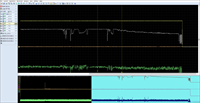
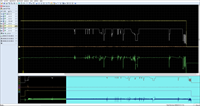
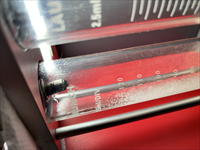

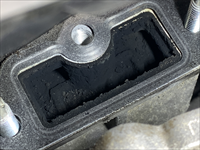
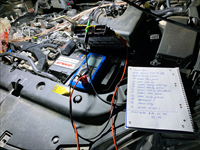

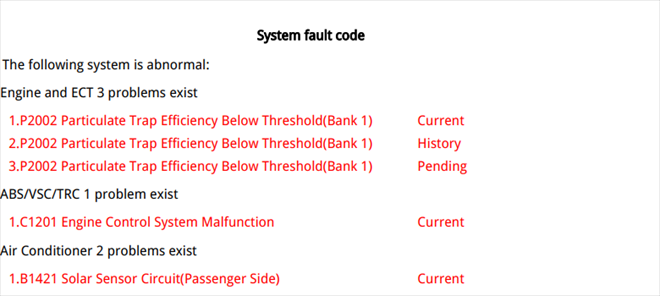

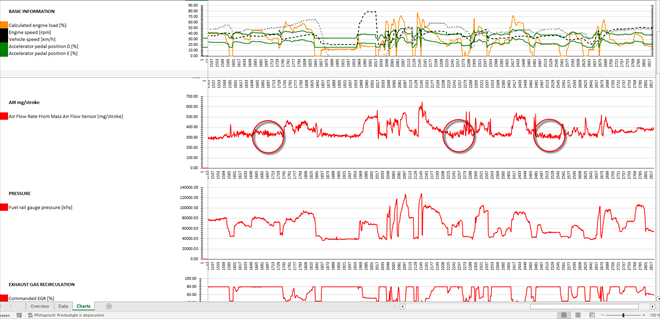
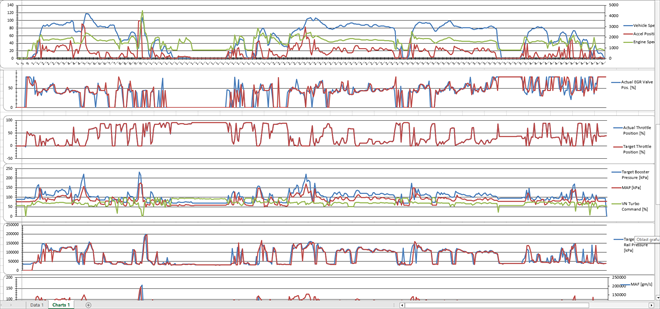
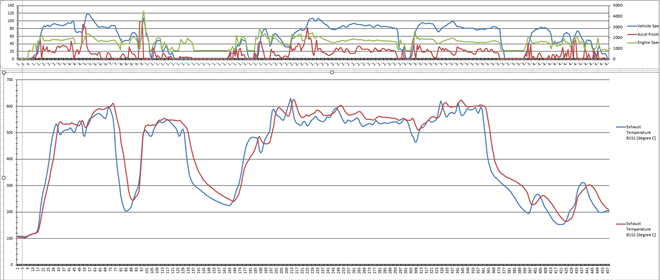
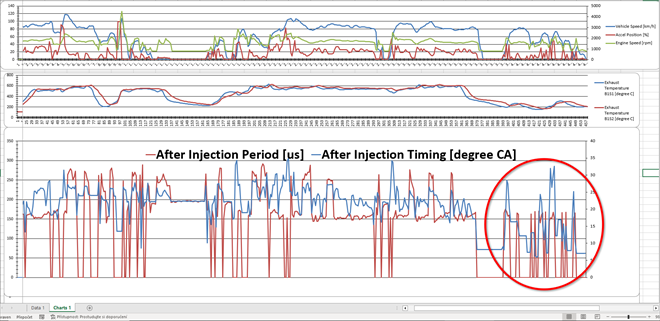

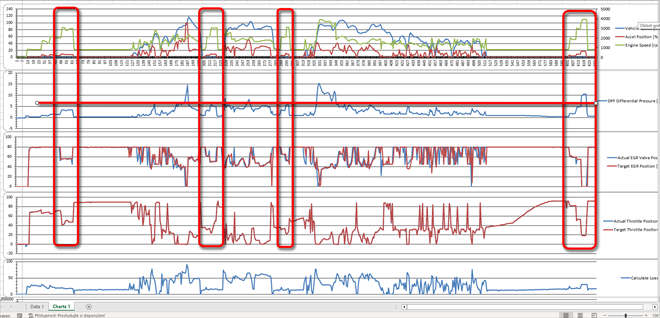
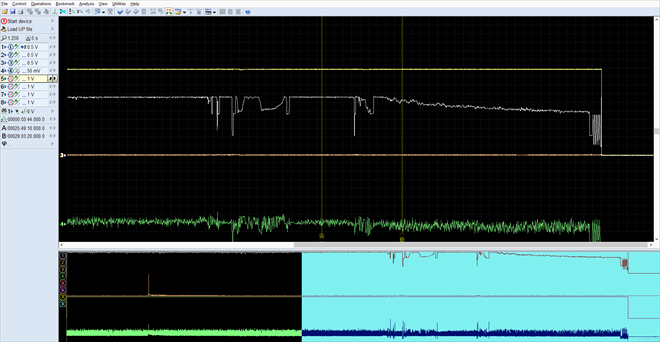
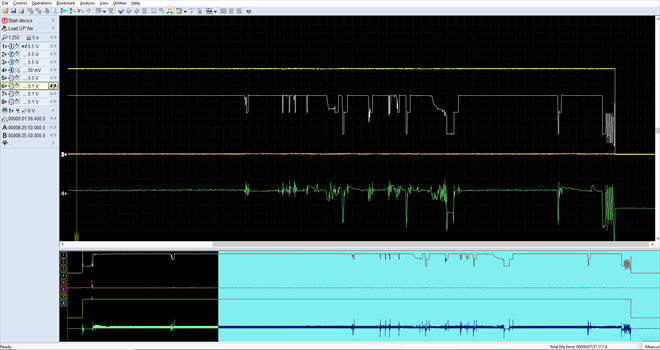
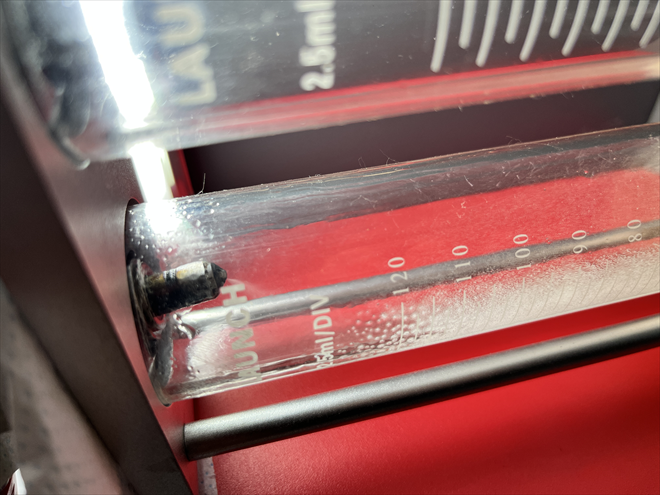
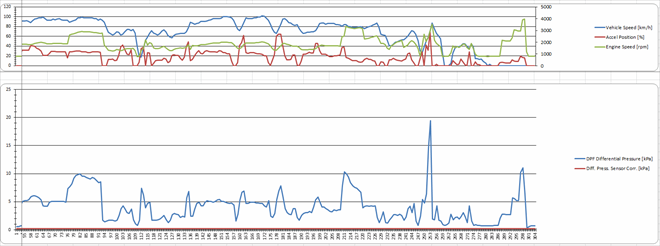
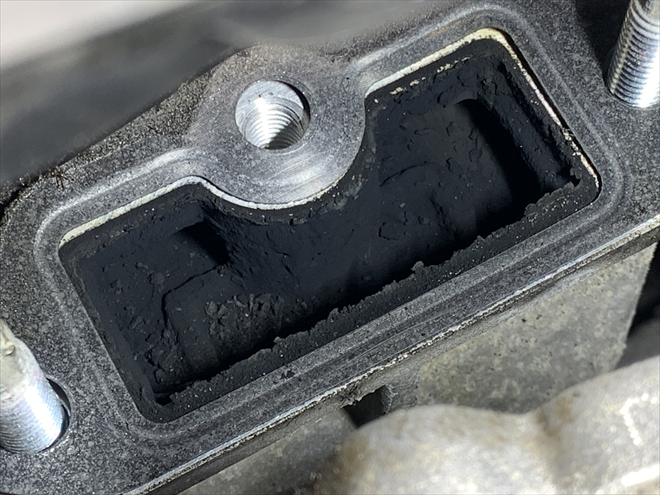
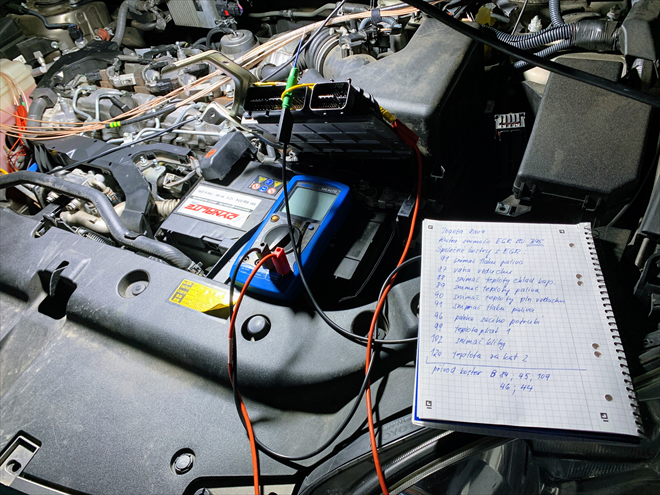
Komentáře (0)